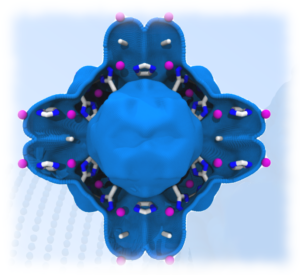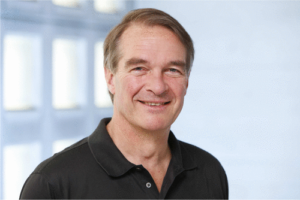October 16th to 18th, 2023. Campinas, Brazil
Institute of Chemistry – University of Campinas (UNICAMP)

Lecturer
Prof. Wilfred van Gunsteren, ETHZ, Switzerland
www.igc.ethz.ch and www.gromos.net
[Application form]
The Advanced School of Molecular Simulation will consist of three days of lectures in the morning (9h00-12h00) and oral presentations in the afternoon (14h00-18h00). The series of lectures will cover current challenges in the field of molecular simulation and perspectives on emerging or active areas of research.
Challenges in Molecular Dynamics Simulations of Bio-Molecules:
On Comparing Simulated with Experimental Data
Computer simulation of the dynamics of bio-molecular systems by the molecular dynamics technique yields the possibility of describing structure-energy-function relationships of molecular processes in terms of interactions at the atomic level. This is one of the reasons why computation based on molecular models is playing an increasingly important role in biology, biological chemistry, and biophysics. Since only a very limited number of properties of bio-molecular systems is actually accessible to measurement by experimental means, computer simulation can complement experiment by providing not only averages, but also distributions and time series of any definable – observable or non-observable – quantity, for example conformational distributions or interactions between parts of molecular systems. Present day bio-molecular modelling is limited in its application by four main problems:
1. the force-field problem,
2. the search (sampling) problem,
3. the ensemble (sampling) problem, and
4. the experimental problem.
These problems, or rather challenges, will be discussed and in particular the pitfalls of comparing simulated with measured data will be illustrated using different examples. Perspectives will be outlined for pushing forward the limitations of computational modelling of bio-molecular systems.
References
W.F. van Gunsteren, et al., Biomolecular modelling: goals, problems, perspectives, Angew. Chem. Int. Ed. 45 (2006) 4064-4092
W.F. van Gunsteren, J. Dolenc, Biomolecular simulation: historical picture and future perspectives, Biochem. Soc. Trans. 36 (2008) 11-15
W.F. van Gunsteren, J.Dolenc, A.E. Mark, Molecular simulation as an aid to experimentalists, Curr. Opin. Struct. Biology 18 (2008) 149-153
Lecture 1. Deriving Structural Information from Experimentally Measured Data on Biomolecules: A Review
Lecture 2. Treatment of Electrostatic Interactions and Accounting for Polarisation Effects in Molecular Simulation
Lecture 3. Methods to Compute Free-Energy Differences in Bio-Molecular Systems
About Prof. Van Gunsteren
Throughout his successful career, Prof. van Gunsteren’s research covered all relevant areas of (bio)molecular simulations and even extended beyond. From methods in conformational sampling and structure refinement, soft constraints, NOE intensity calculations, time-averaging, adiabatic-decoupling, and multigraining. He has also changed the way computational chemists discuss simulation data by pushing forward the requirement of critical examination of the relationship between experimental and simulated. Be it in the context of nuclear magnetic resonance, X-ray crystallography, or circular dichroism, experimental observables are properties of a conformational ensemble. Their interpretation in terms of a single structure often leads to conclusions that range from inaccurate to entirely incorrect. In the domain of free-energy calculations, work was continued on the single-step perturbation method, on the design of improved nonbonded scaling schemes, and on the calculation of potentials of mean force. New approaches were also developed such as the hidden restraints and the enveloping distribution sampling methods. Entropy calculations also represented an important research line of his, considering, in particular, the covariance-matrix and the solvent–solvent entropy–enthalpy cancellation approaches. Force-field development, in terms of both methodology and parametrization, was extended along the lines of atomistic, polarizable, implicit-solvent, and coarse-grained models. Contributions in the domain of electrostatic interactions as well as excursions in the domain of mixed quantum-classical methods may also be mentioned. The application of new methodologies extended over a broad spectrum of organic and biological (macro)molecules, including peptides and proteins, but also nucleic acids, lipids, and carbohydrates.
Organizers
Thereza A. Soares – USP
Leandro Martinez – UNICAMP
Vitor Leite – UNESP

